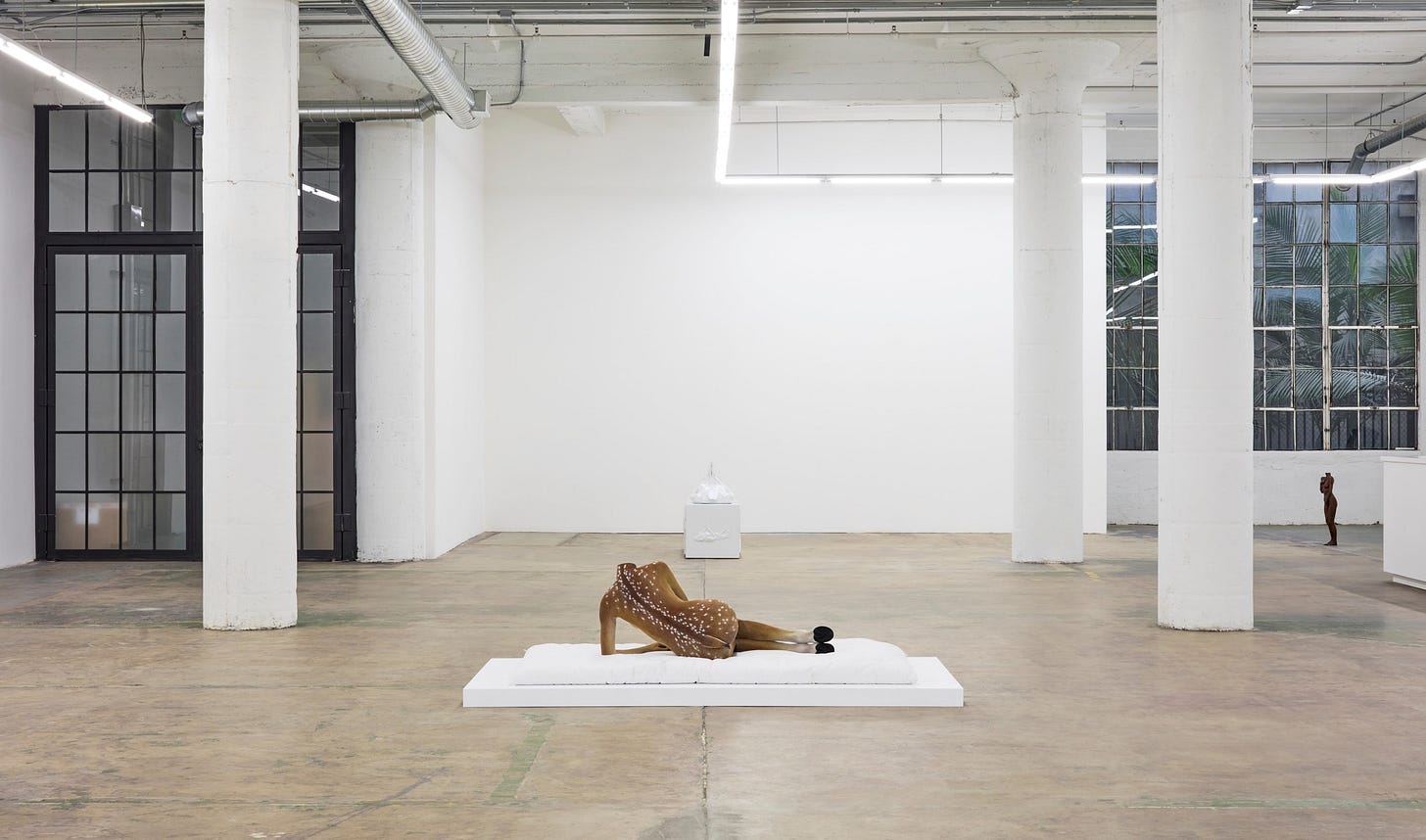
Do you remember Isabelle Albuquerque’s exhibit “Orgy for Ten People in One Body”? I couldn’t bring myself to go see the show in person when it was on view at Jeffrey Deitch from 2022-2023, but figure 5 continues to haunt me; I can’t seem to escape the headless doe-woman hybrid reclined on a pouf. (The piece originally debuted at Nicodim Gallery in 2020, representing the artist as “a doe on a pillow of grass, her cloven hooves singing of the surfaces and souls with which they’ve made contact.”) Together, these erotic sculptures serve as “an activated collective site of resistance, power and ecstasy.” The deer possesses a natural whimsiness that inspires awe and endearment. There’s something very poetic about it, like when you listen to Norman Fucking Rockwell from top to bottom… Life imitates art, you know?
“I associate deer with innocence (cc: a traumatic first viewing of Bambi when I was a child), but I still think deer hide/print has a kindness to it? God knows why, but to me it feels like a softer spoken but just as naught sister to leopard or cheetah,” Georgia Somary of Earl Grey Studio writes in a text. “The Axis deer that the print comes from is also quite wild because it’s seen as an invasive species in Texas/Hawaii and isn’t endangered because they got brought from India all over the world in the 30s… so maybe that’s why you see it less? Because the hides were never as valuable? I’m just guessing here haha- exotic but abundant?”
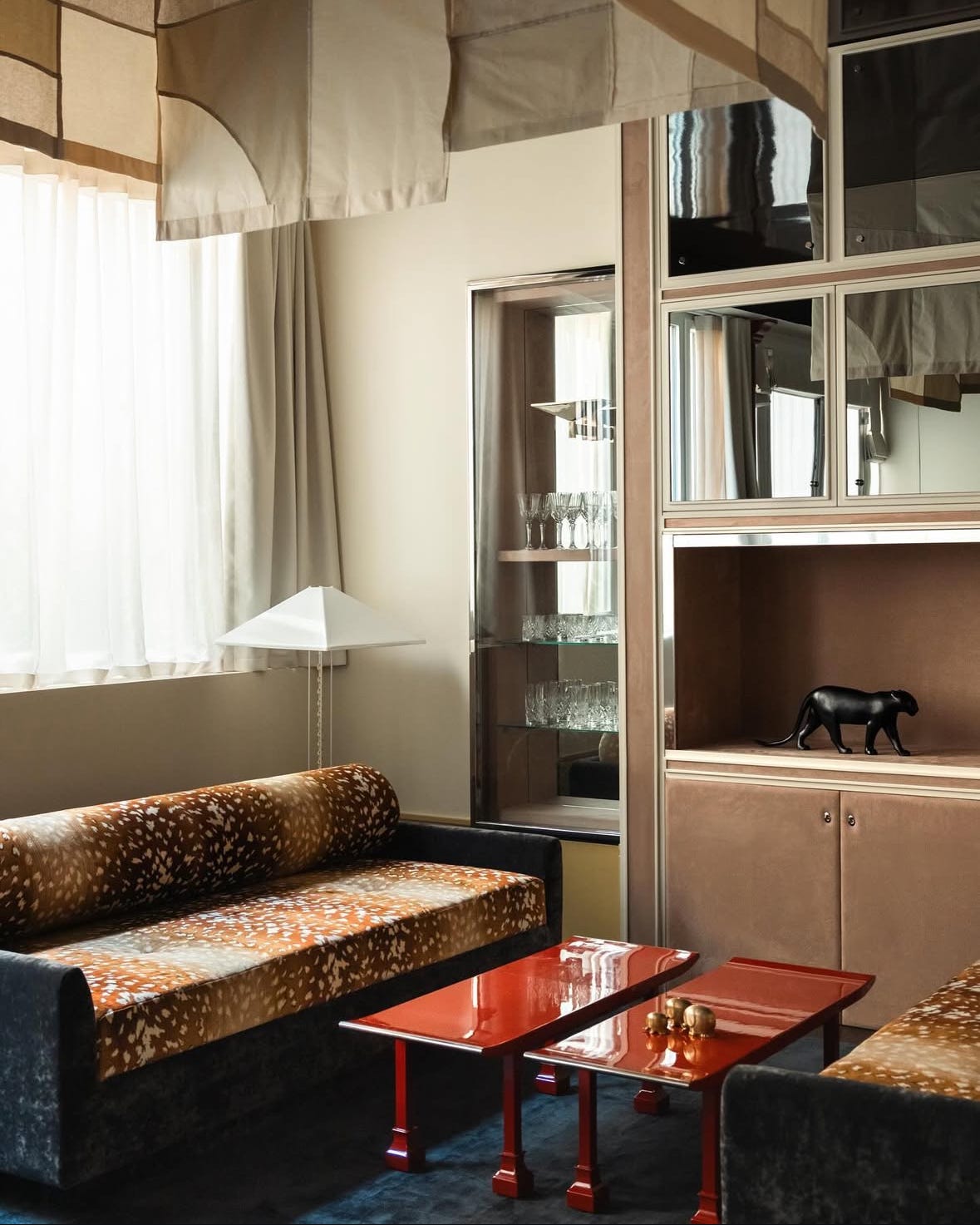
While I was doomscrolling on Instagram about a month ago, I stumbled upon footage of Oscar Niemeyer’s Alta lounge chair upholstered in deer hide in the corner of a crowded room at Seventh House Gallery. The stars seemed to align when I was presented with a freelance assignment that brought me to Los Angeles a few weeks ago which meant that I could finally behold its beauty in person with Georgia as my witness. Unfortunately, the chair was loaned to a client so my dream was deferred!
Obviously, this isn’t the first chair of its kind to exist—the most iconic model was designed by Jean-Michel Frank in 1937 for the Llao-Llao Hotel in Argentina. Pied à Terre, a Paris-based luxury rental company of architectural residences, has a set of deer print sofas in a Necchi Architecture-designed loft apartment that World of Interiors describes as “a little slice of Studio 54-style hedonism.” Sitting on the more extreme end of the spectrum is Rick Owens and Michèle Lamy with their infamous stag furniture. (I’ll be honest, antlers freak me out a bit… I’m sure it has something to do with my aversion to mounted deer heads.) But there’s this quiet elegance to deer print that’s worth yapping your ear off. In the words of Chappell Roan, “Ain’t got antlers on my walls/ But I sure know mating calls.”
I’m referring to this emerging trend as “doecore” because I really like how that rolls off the tongue. Even though everyone isn’t fawning over it quite yet, deer print should definitely be on your radar. Orion Carloto included a pair of deer spotted socks in her latest doublesoul collab, Tyler the Creator has been teasing a collection of “Bambi” products through his brand le FLEUR*, and Tory Burch trotted some sexy doecore pieces down the runway at NYFW—there were no crumbs on the floor, she ate! Most recently, CAWLEY released a deadstock deer print jacket that made me feel sick as a dog when it sold out. (A few days later, it became available for a limited pre-order which felt like a sign from the universe to invest so I treated myself.) Last week, Kimberly Zhong’s “A Dream with Fawns and Dogs” show opened at Mellow—a wooden shelf of ceramic fawns and an oil painting of a vintage Bambi music box can be seen in the display window.
Esther Sarofiem, founder of Elpida, suspects that the growing appetite for deer print stems from a collective desire for distinctness as more people seek out alternatives to stand out amongst the masses. “Choosing deer hide is a deliberate decision, one that expresses a preference for timelessness over fleeting trends—it signifies a commitment to individuality and subtle sophistication, adding texture and character in a way that feels refined yet unexpected,” she explains in an email. “In an era where originality is highly valued, deer print presents a refreshing shift from the more predictable, offering a unique, nature-inspired element that stands apart from the current mainstream.”
Ariane Martins, a Brooklyn-based brand marketer and social media strategist, has had Bambi on the brain ever since the animated Disney character was the face of Givenchy’s Fall/Winter 2013 collection. (The thirtysomething cherishes the fawn figurine that stands in position in front of a framed vintage needlepoint mountain chalet piece on top of her dresser.) “There was a similar recession happening then that’s happening now, and I feel like there was this call for softness,” she says. The main difference in 2025 is that instead of building an identity around this specific pop culture reference, more people seem to be fixating on the animal itself as a symbol of escapism. Surely, you’ve encountered some of the deer memes that have been circulating on the Internet; whenever I spot one in the wild it reminds me to slow down and be gentle with myself.
With unlimited access to an endless stream of references, it’s become increasingly difficult for people to find special style-markers that feel exclusive to them—this is especially true in the realm of animal prints. “We’re looking for a way to stand out and be unique in this over commodified world where it’s so easy to copy each other,” Ariane insists. “People are getting really good at collecting references and then actually executing their dream style… I think we’re all just trying to find our identity.”

While deer is a relatively rare breed within interior settings, it complements a wide range of design styles. Esther wonders if the lack of deer print might be due to the overwhelming presence of widely produced materials such as leather, cowhide, and the faux-exotic prints. “As an interior designer and curator with a focus on vintage-inspired interiors, I’ve noticed that deer hide has been underutilized throughout design history,” she says. “Because of this, it often doesn’t factor into the inspiration drawn from past design movements.”
Even though deer is often overshadowed by other animal prints, Esther positions it as the “understated yet sophisticated choice” to add depth and distinction to a space. “Its organic markings and muted hues provide a natural elegance that effortlessly complements a wide spectrum of design aesthetics—from classic, vintage-inspired interiors to sleek, minimalist environments,” she continues. “Deer hide introduces a subtle texture that enhances the depth of a space without overwhelming the visual composition. Its inherent versatility makes it an ideal choice for upholstery, accent pieces, and layered elements, offering warmth and refinement in an artful, understated manner.”
From Worstcase’s Bambi tabis and Luanne Huang’s Bambi bag to this screen printed set by Valeria Anastasia, deer print has so many applications to offer. This is why Esther emphasizes the importance of contemporary designers daring to explore other materials. “The temptation to rely on trendy or easily accessible materials is strong, but intentionally seeking out more rare elements can result in spaces that are more meaningful and reflective of your own unique style,” she says. “This mindset not only fosters innovation but also nurtures creativity within the industry, encouraging designers to think beyond the conventional and embrace the beauty of the unexpected.”

For millennials, doecore might be reminiscent of the Tumblr era when so many of us romanticized soft femme aesthetics. (Remember when I wrote about the rise of the “sad girl” for The Toast in 2014? RIP.) So, could this be the new standard of femininity? Or is the Bambi takeover a symptom of something bigger than “girlhood”? I believe that doecore is another part of the collective reclaiming of the Great Outdoors. #Cottagecore was just setting the stage for the scene—we’ve seen how quickly people latch on to hunting and fishing aesthetics, and I still think that the ranch house renaissance will find its way to the mainstream.
From my POV, doecore is not a call for tradwifery, but a response to all the predators we currently seek refuge from. Let’s face it, millennials are tired of grinding. Maybe I’m reading too deeply into this, but the doe feels like a guide leading us to retreat into ourselves as an escape from our domestic tribulations. (What do we want? Rest! When do we want it? NOW.) “Go outside and touch grass” is both an insult that I say with my full chest and a mantra that I now strive to live by. When you’re locked into doe mode, all is seemingly forgiven—we’re surrendering to the feminine urge to frolic in the forest and never come back, unlike the rest of you silly gooses! Nature is healing. “There’s this frivolous lack of accountability that we’re all kind of ironically adopting after doing the girlboss thing for so long,” Ariane concludes. “This call for innocence, childlike wonder, and escape is all connected.”
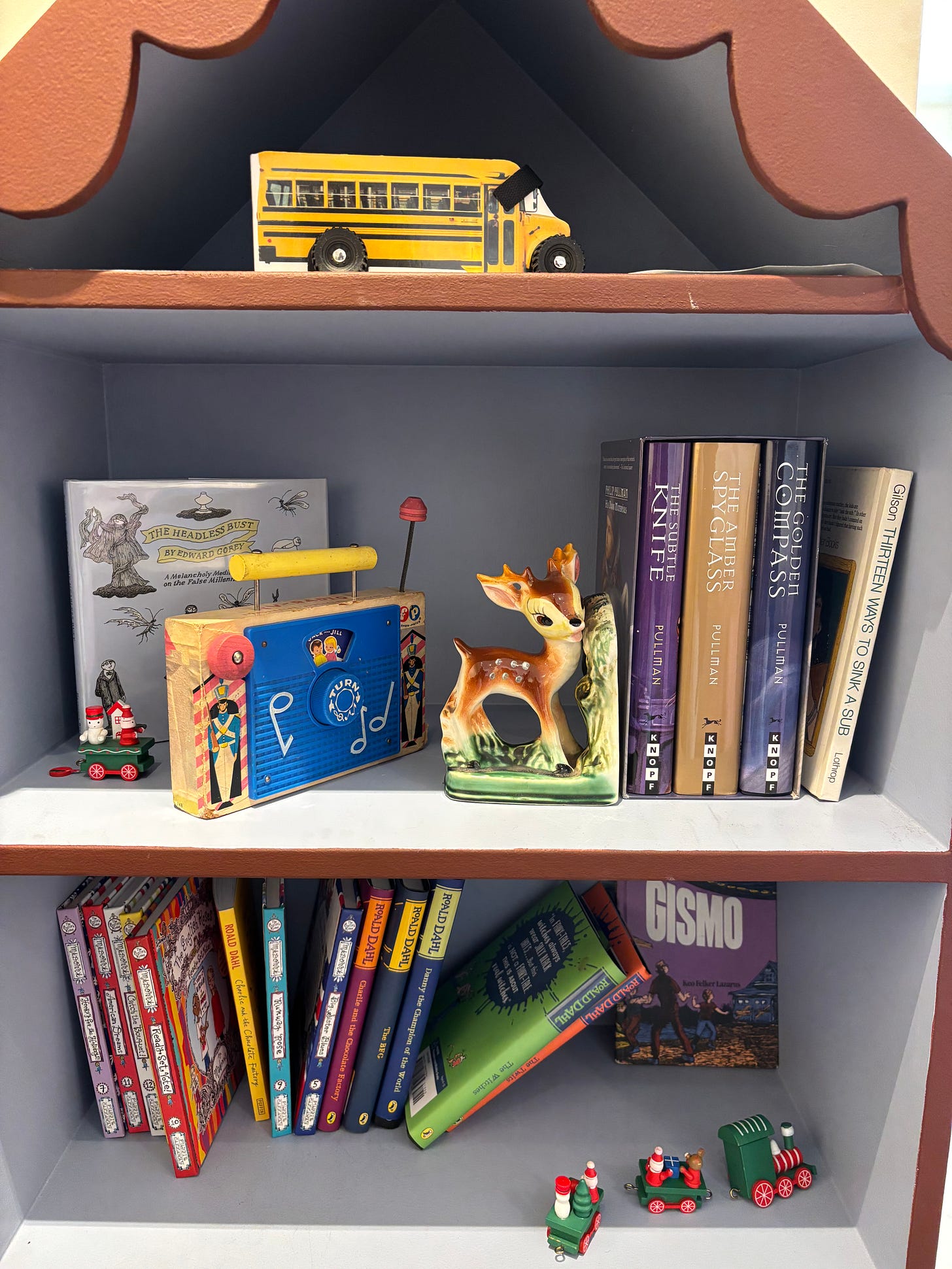
I’ll close my case with story time: Back in 2023, my mom and I were driving on the New Jersey turnpike when a deer came flying out of nowhere across the highway. Thankfully, she slammed the brakes in time as it leaped over the barricade and in front of our car, but we watched in horror as the buck collided with a huge truck in the middle lane that couldn’t move out of the way. I had never been more startled by an accident, I couldn’t stop shaking in the passenger seat and went completely mute while trying to process the whole scenario in real time. A few hours after I got back safely to my apartment, I felt compelled to look up if there might be a spiritual meaning associated with this type of incident and found a post describing it as “a wake-up call from the deer”:
“A collision with a deer is often perceived as a spiritual call to action, urging us to rekindle our bond with nature and exhibit reverence for all living entities. It reminds us of the underlying principle of coexistence and the inherent interconnectedness of all life forms. Understanding this aspect of the spiritual meaning of hitting a deer illuminates the path towards environmental stewardship, fostering a balanced relationship with the natural world.
This incident can be seen as a reminder, nudging us to approach life with compassion, kindness, and a loving demeanor. By embodying these qualities, we can foster an environment of mutual respect, understanding, and empathy, ultimately leading to a more fulfilling existence.”
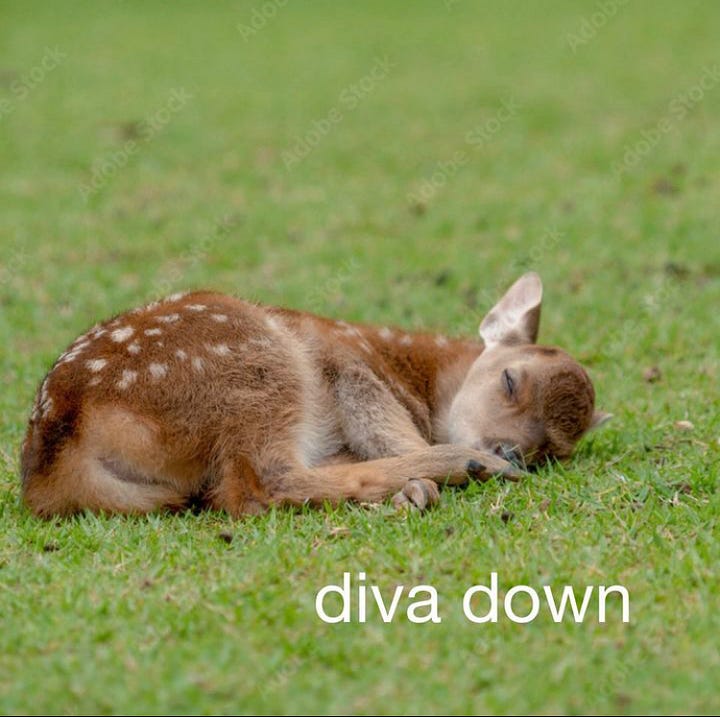
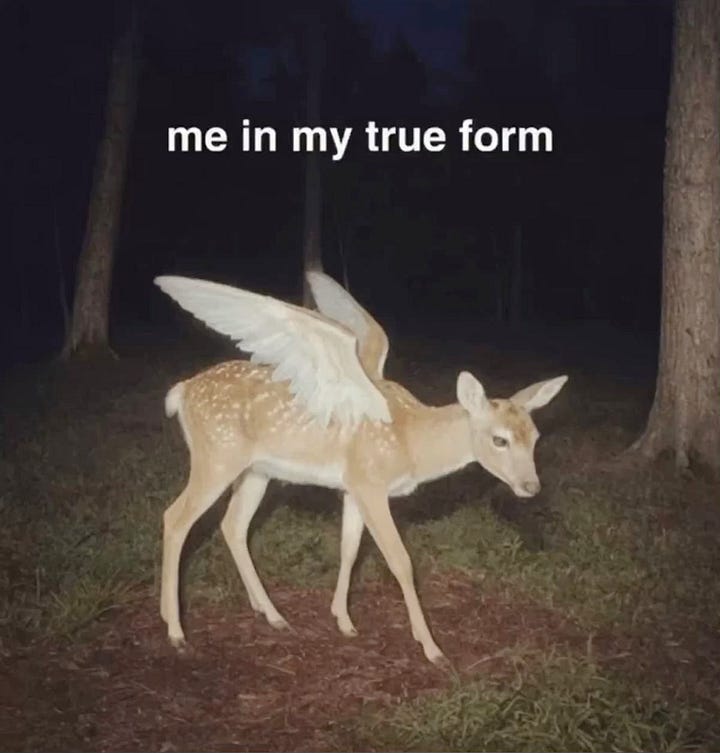


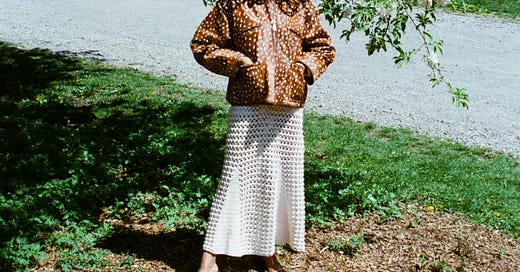


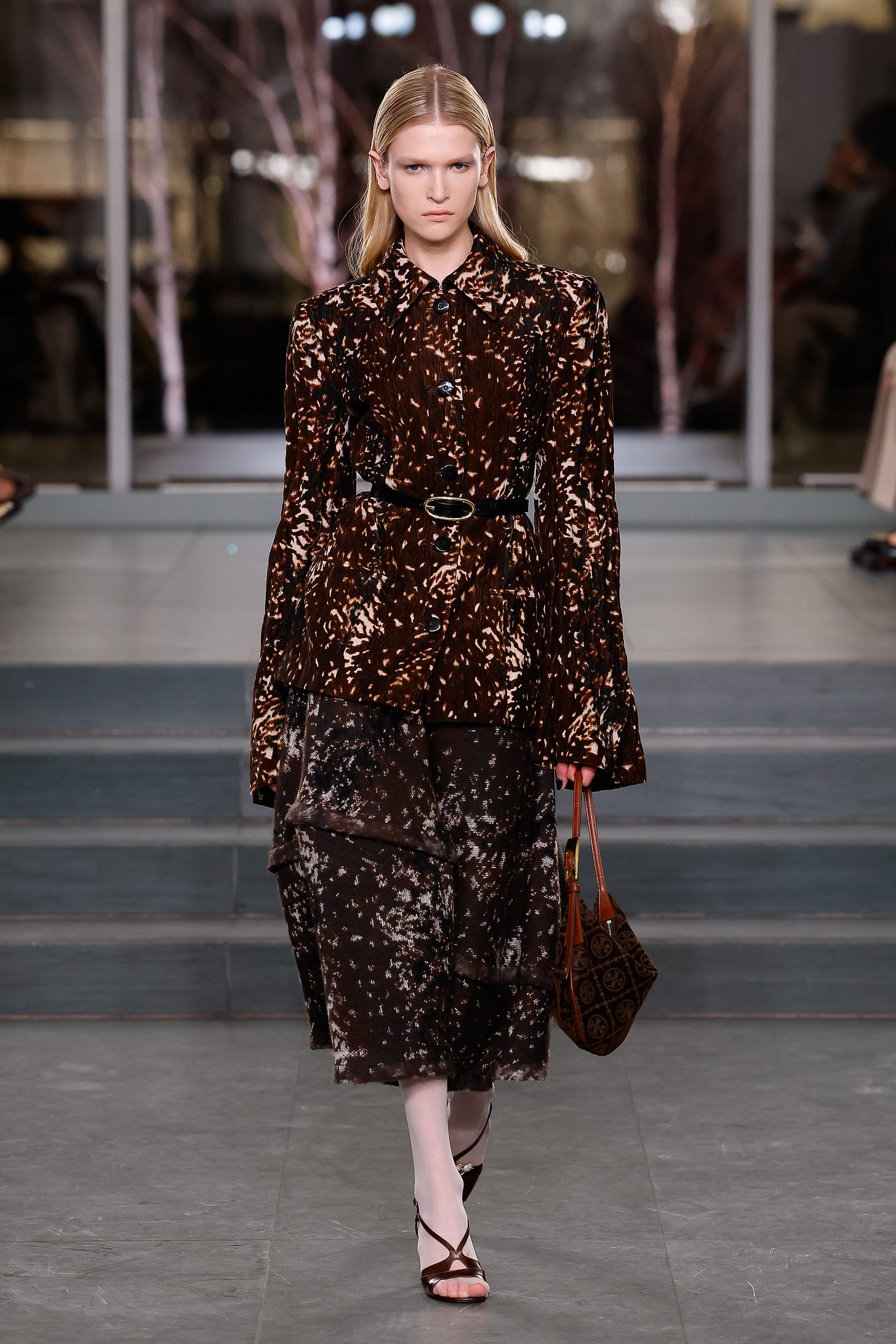
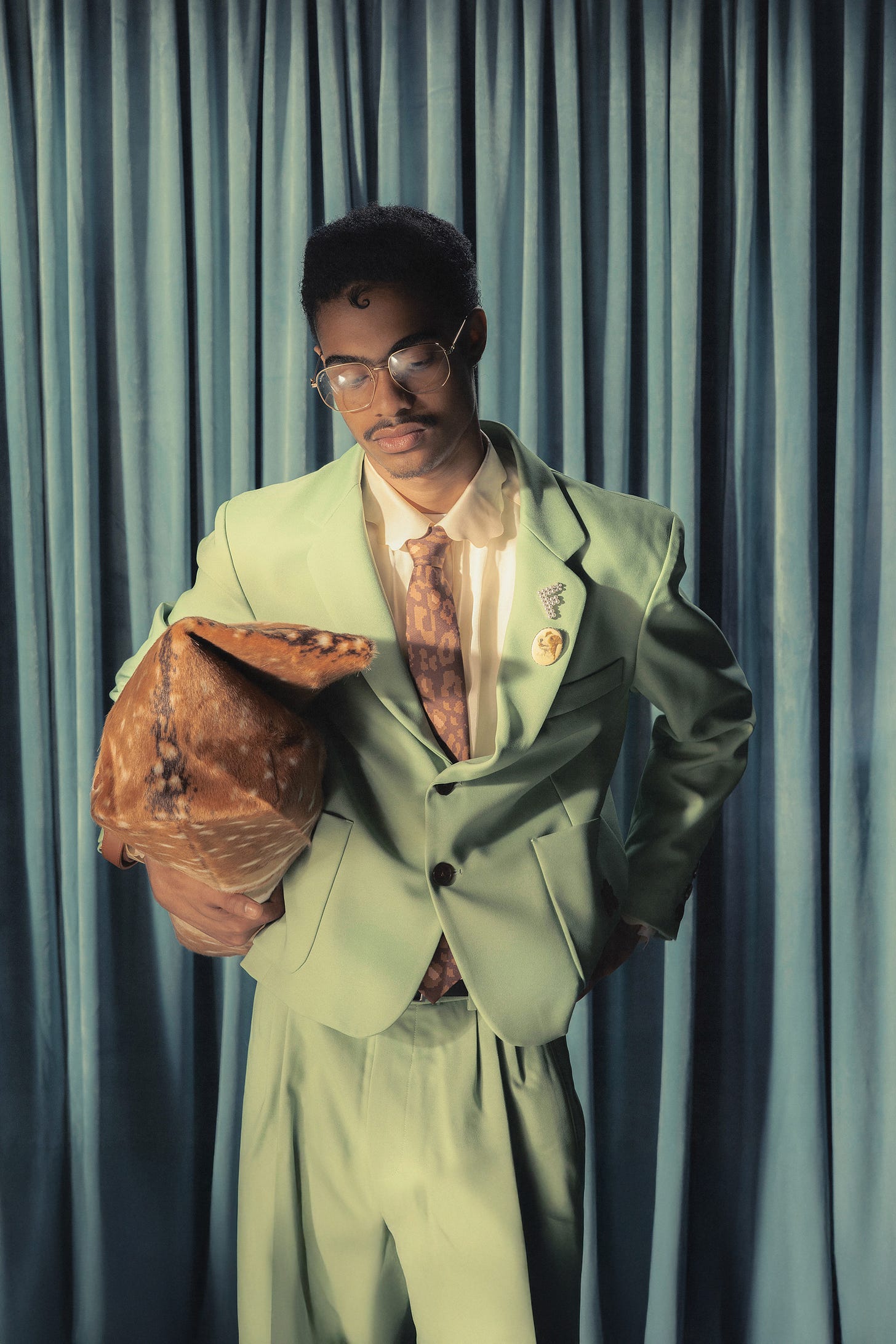

I think so. Curious about cherries too.
I still haven’t seen that chair…